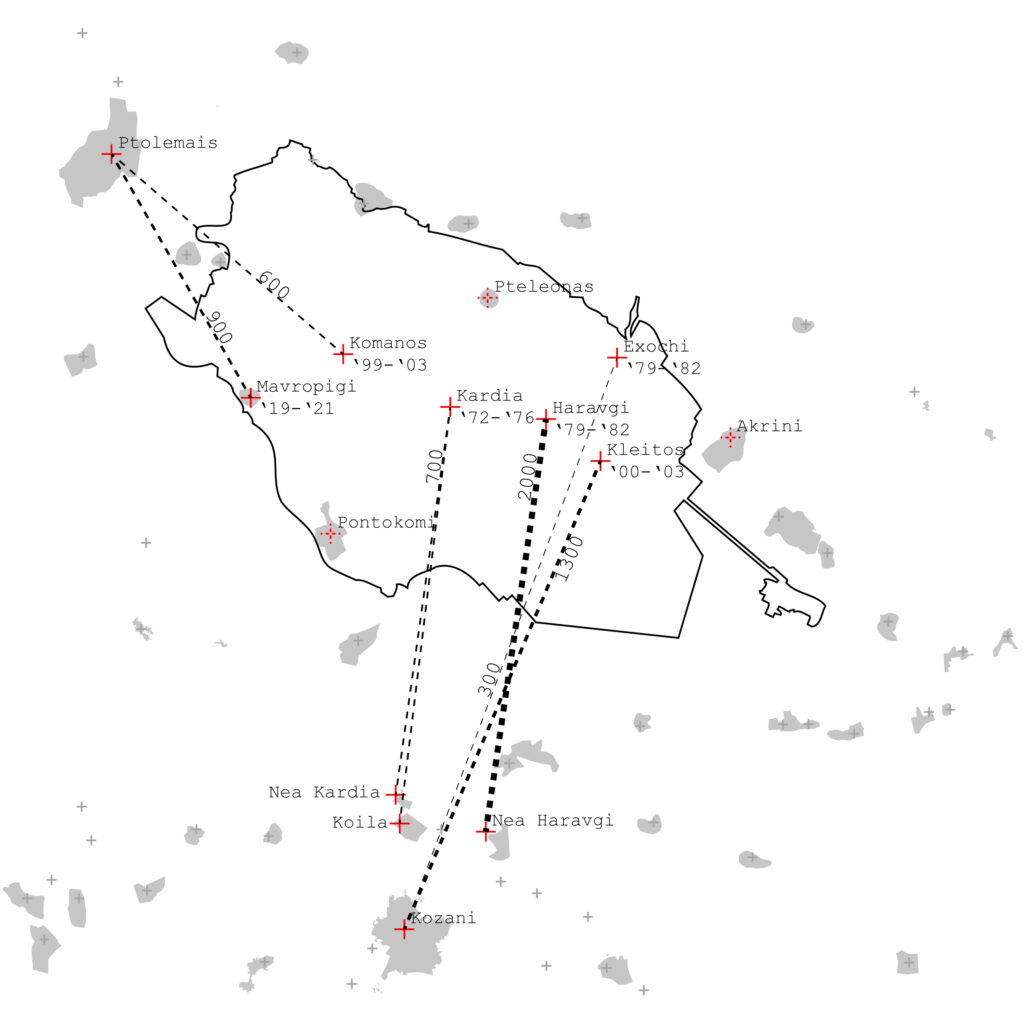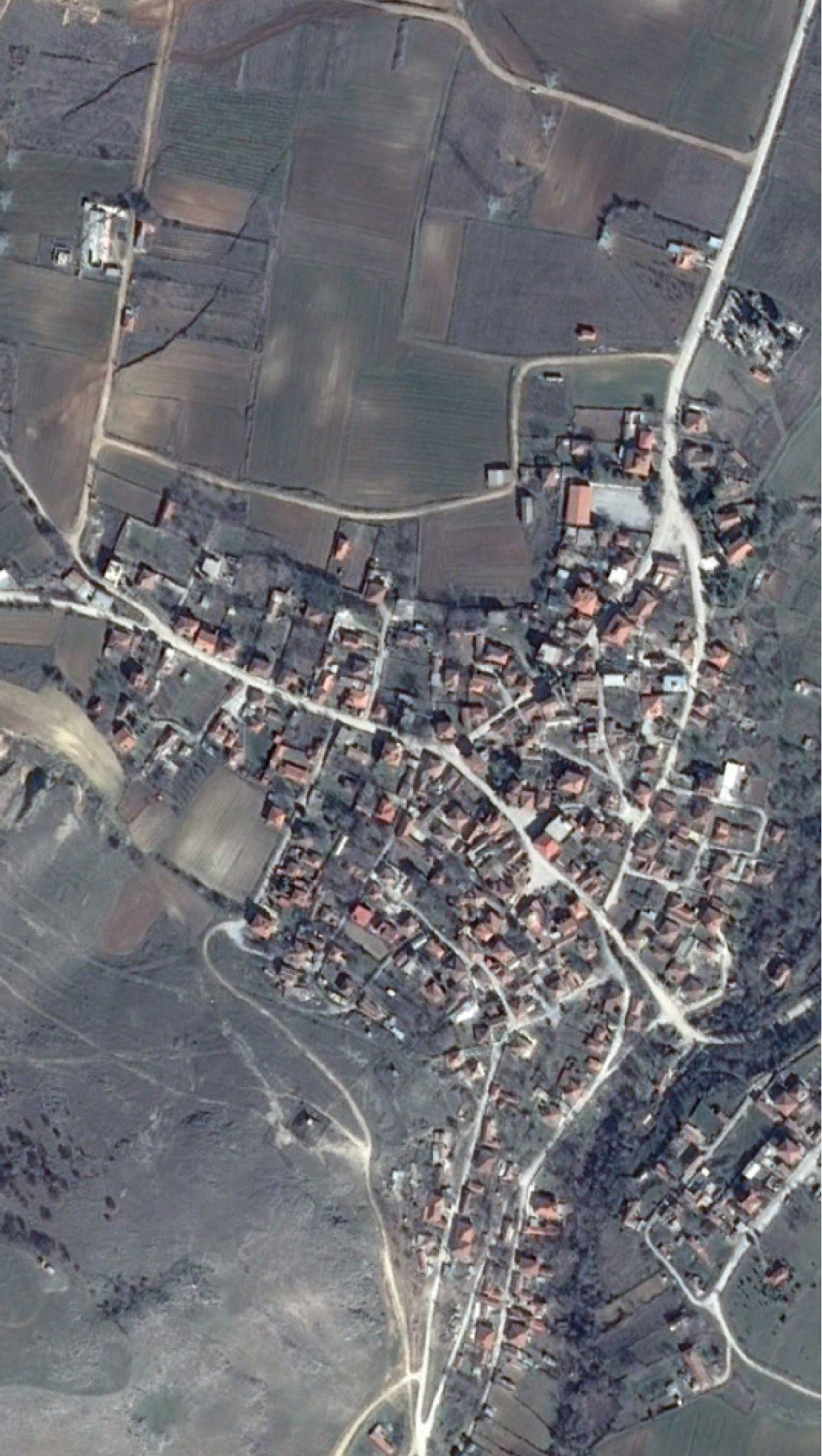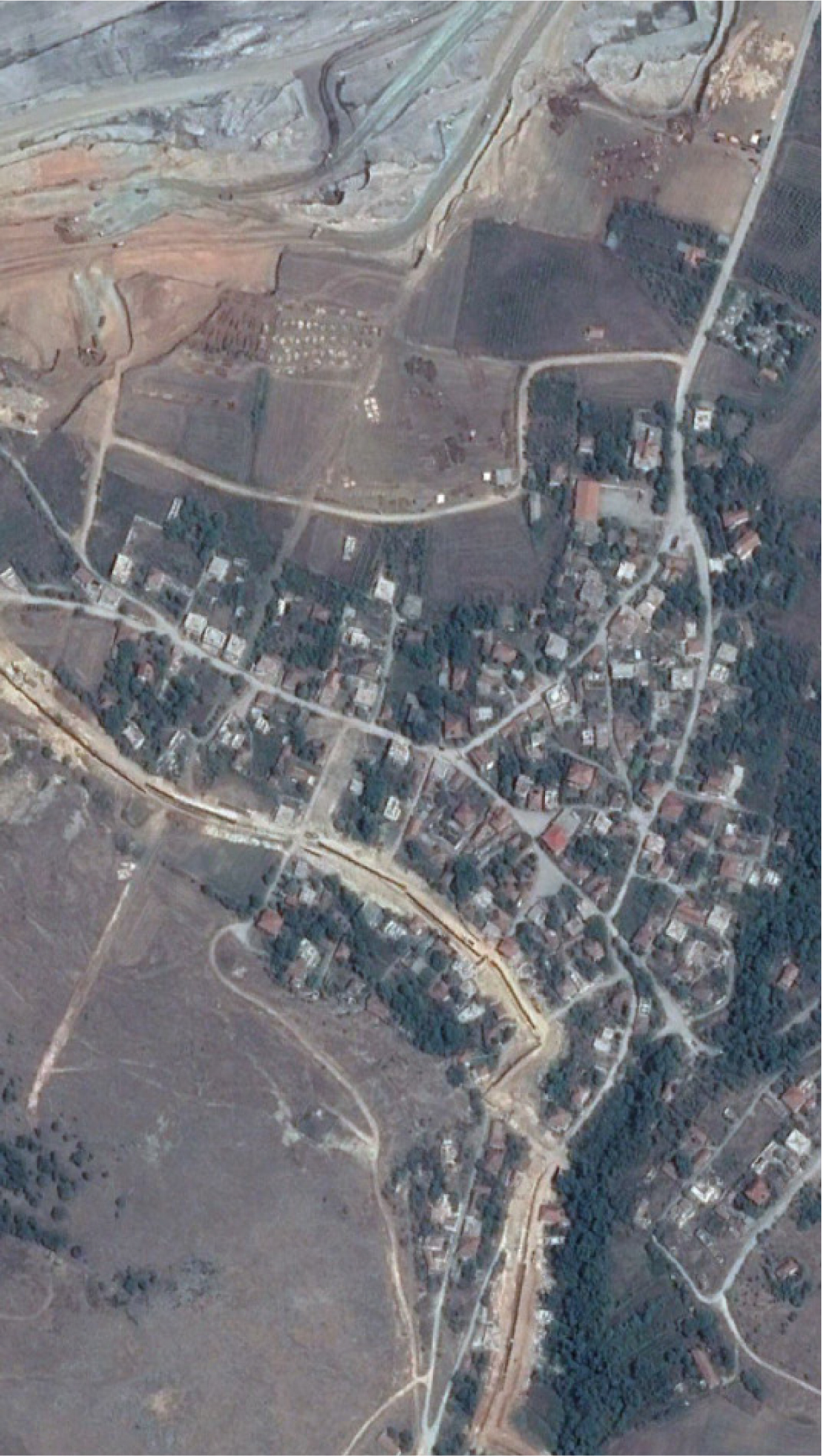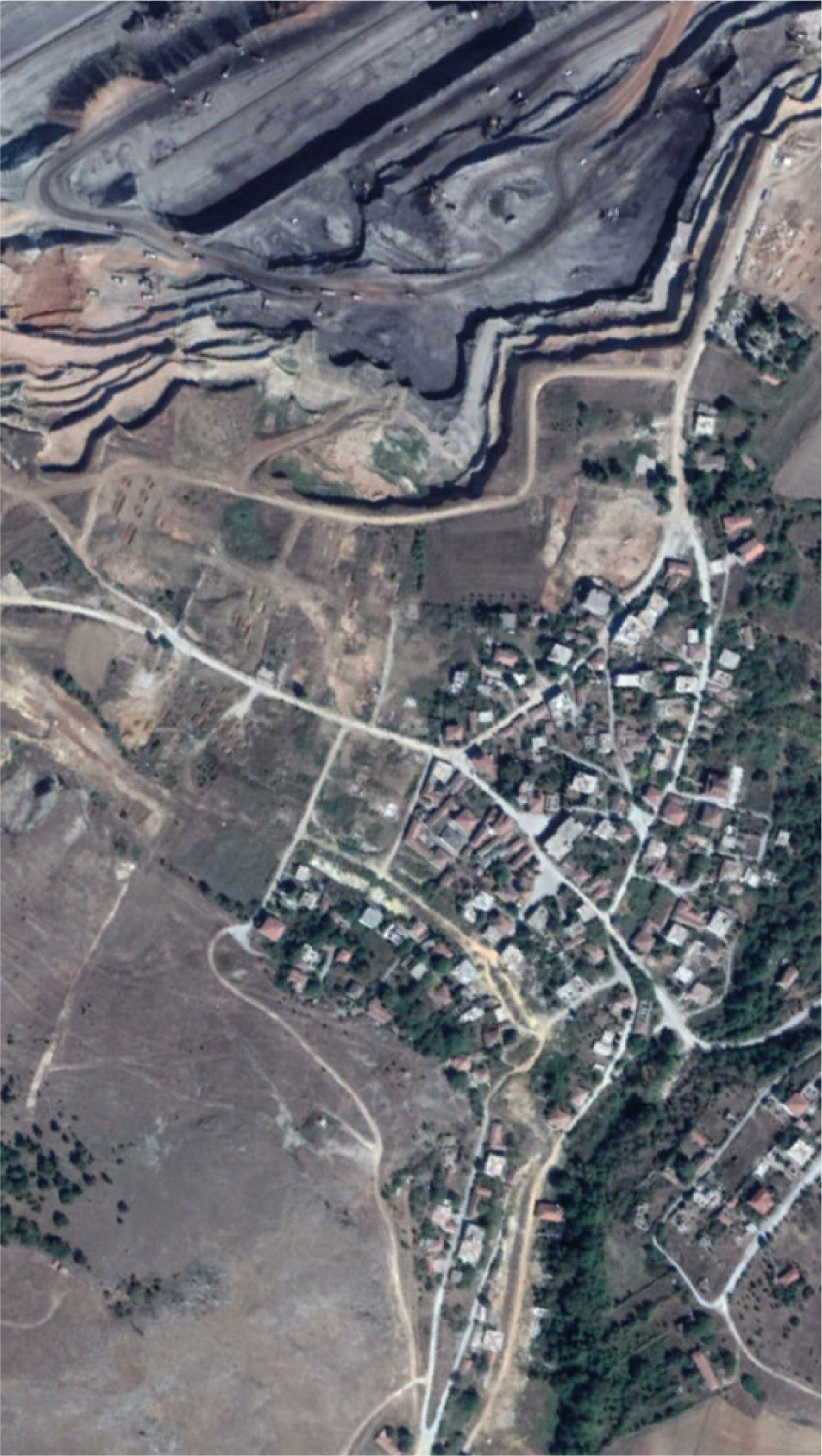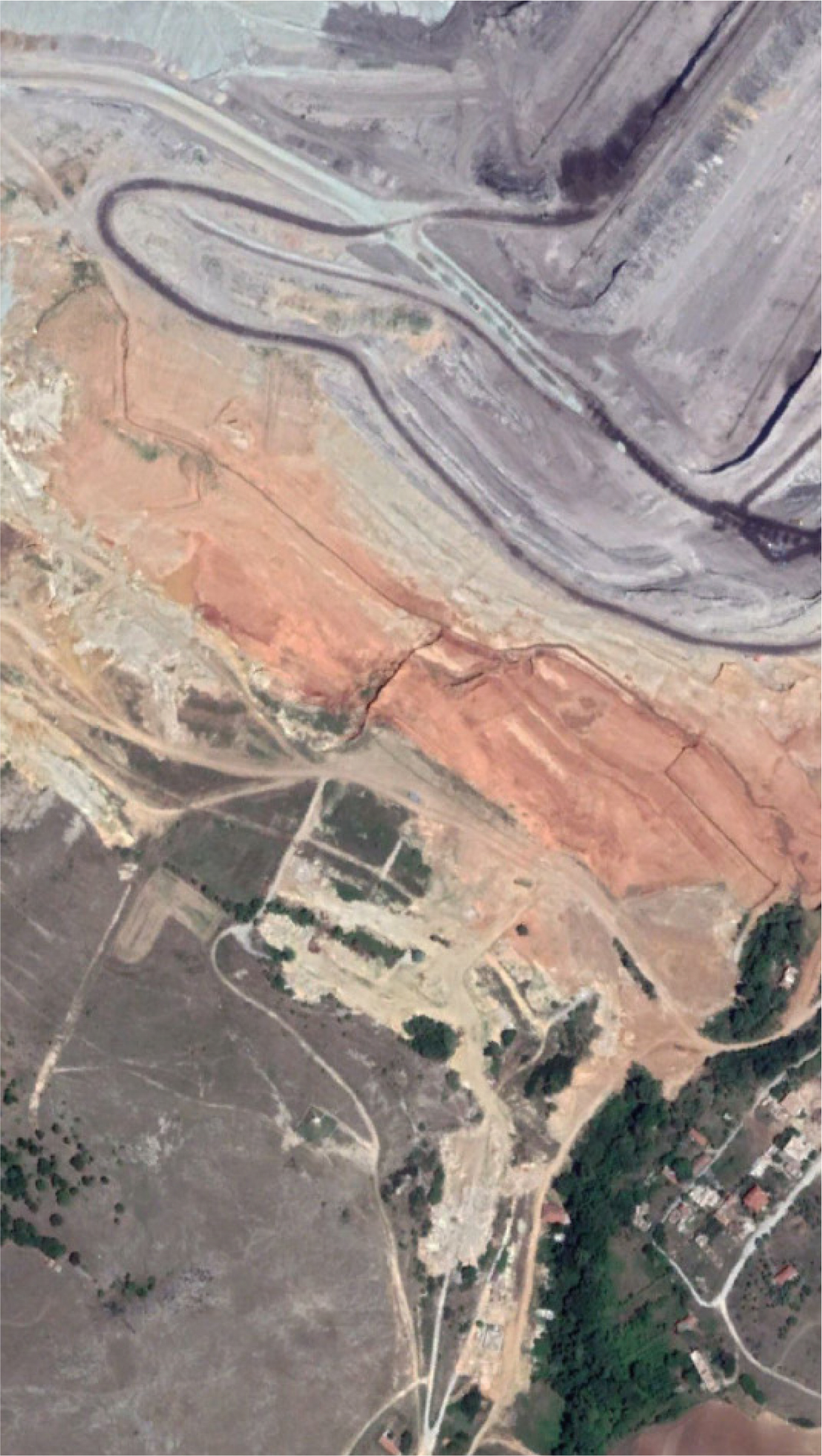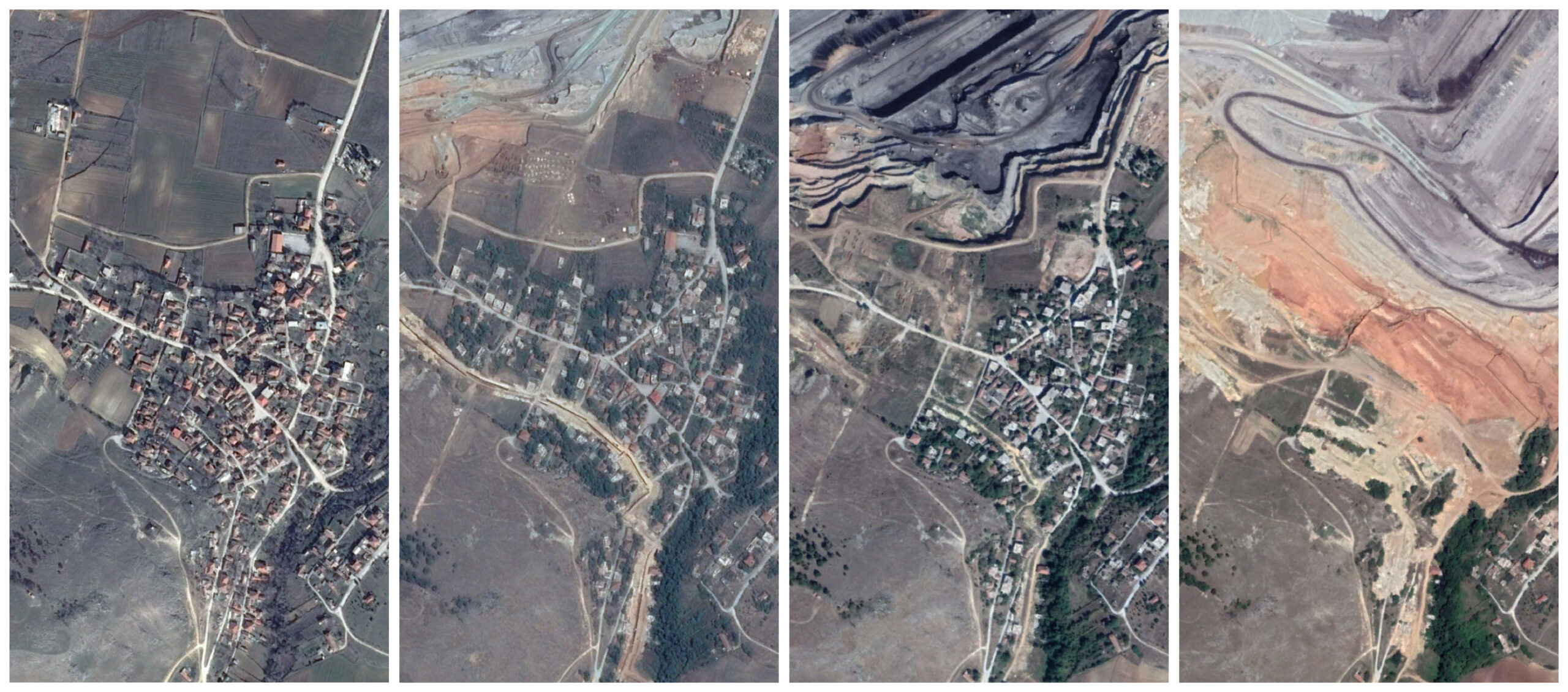EXPANSION AND DISPLACEMENT
Throughout 66 years, the industry has occupied an area of over 17,000 ha, changing the landscape of the Ptolemais Basin. The hinterland has become the size of a large urban agglomeration. The mining operations extracted over 8.5 billion cubic metres of rocks and produced more than 1.7 billion tons of lignite. Extraction and landfilling create a crawling void, slowly taking over the land.
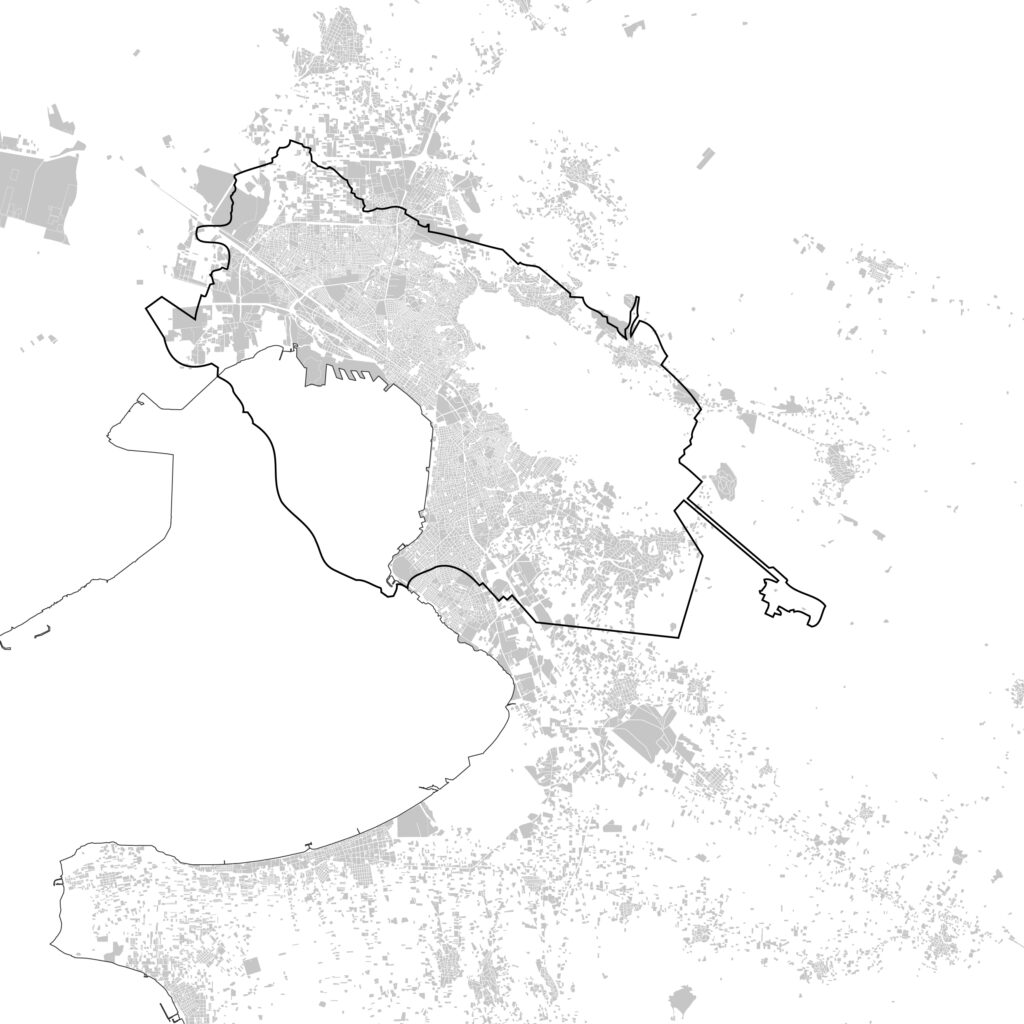
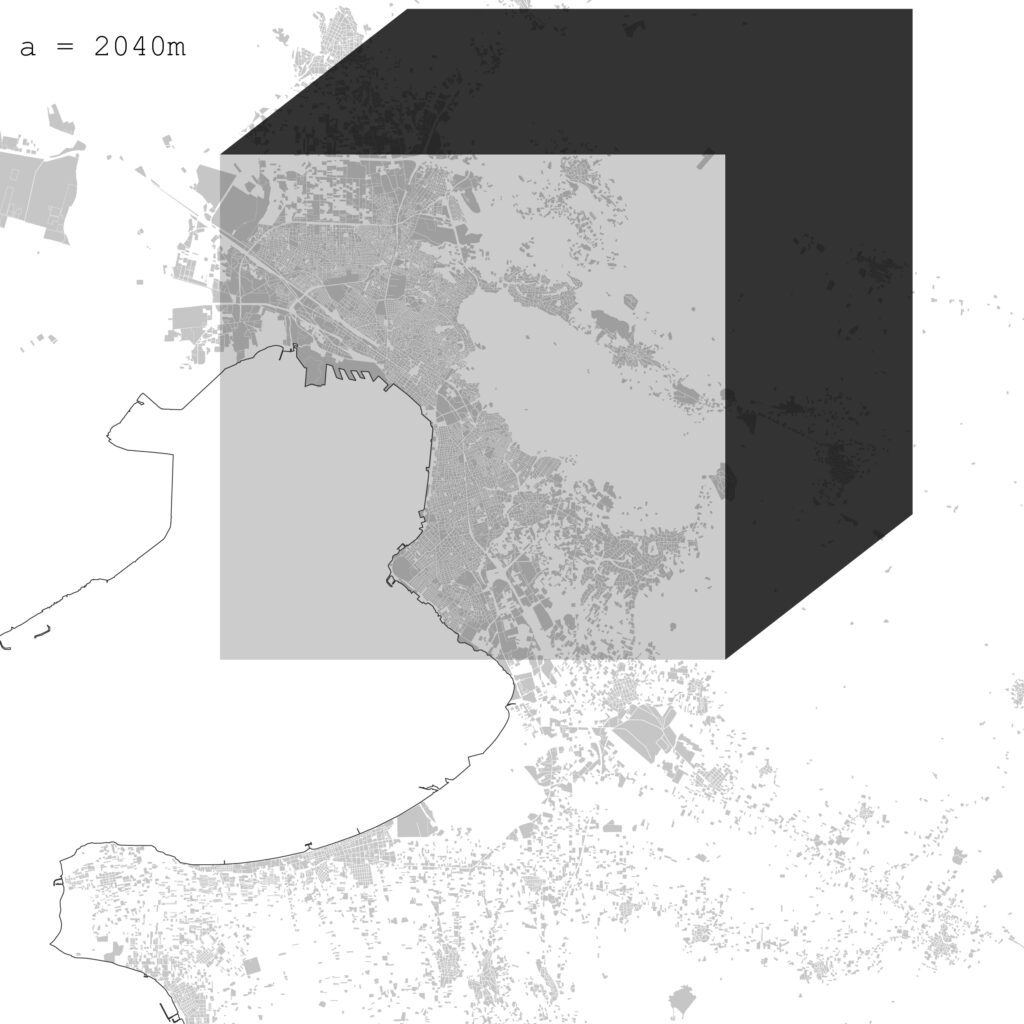
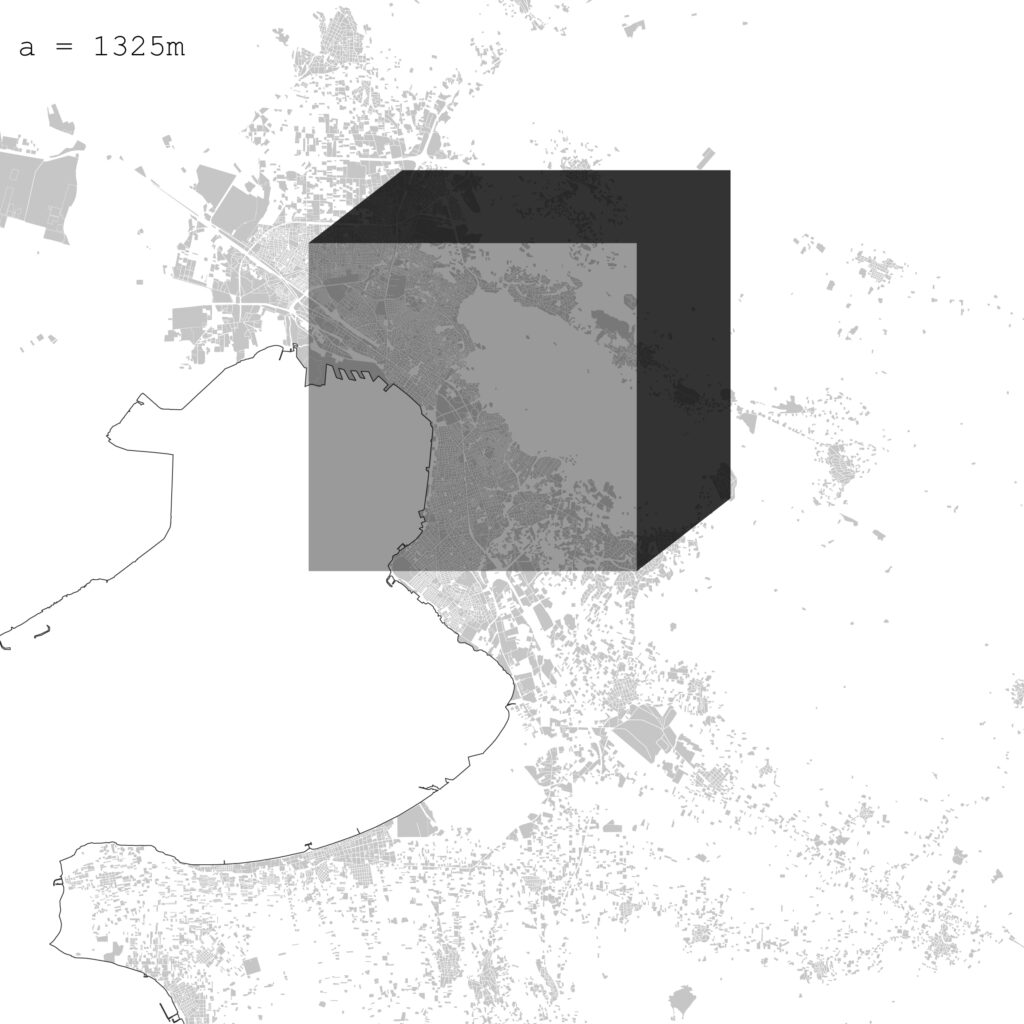
The city/non-city relation hollows out social and cultural factors. Due to sprawling mining operations, PPC, the company responsible for energy production, has been relocating villages sitting on the deposits. With the first operation in the period of 1972-1976, untill today, the company has internally displaced over 5800 inhabitants of six villages, with the next two currently waiting for relocation. Slowly absorbing lands of agriculture and living, mining activities are displacing large communities to new locations. Descendants of victims of the population exchanges during the 1920s are forced to share a similar fate. The impact of extraction leaves no opportunities for residents unwilling to leave their homes, as they simply will be deprived of the electricity and water supply.
